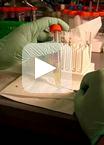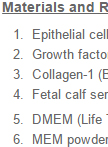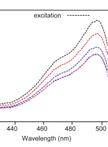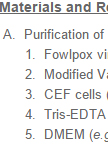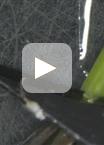往期刊物2015
卷册: 5, 期号: 1
生物化学
Lipid Extraction from Mouse Feces
小鼠排泄物中的脂质提取
癌症生物学
Analysis of Protein Stability by the Cycloheximide Chase Assay
放线菌酮追踪检测分析蛋白质的稳定性
Three Dimensional Spheroid Co-culture Invasion Assay
三维球状体共培养侵袭研究
免疫学
Intracellular Cytokine Staining on PBMCs Using CyTOFTM Mass Cytometry
适用于CyTOF质谱流式细胞仪的外周血单核细胞(PBMC)细胞因子胞内染色方法
微生物学
Quantification of Extracellular Ammonium Concentrations and Transporter Activity in Yeast Using AmTrac Fluorescent Sensors
采用AmTrac荧光传感器定量测定酵母细胞的胞外铵浓度和转运蛋白活性
Construction of FWPV Chimaeric MVA
FWPV 嵌合 MVA的建立
神经科学
In vitro Migration Assays for Neural Stem Cells, Intermediate Neurogenic Progenitors and Immature Neurons
神经干细胞、中间神经性前体细胞和未成熟神经元的体外迁移分析
Manganese Cytotoxicity Assay on Hippocampal Neuronal Cell Culture
海马神经元细胞培养的锰细胞毒性分析
植物科学
Collection of Root Exudate from Duckweed
浮萍根部分泌物的采集
Imaging and Quantitative Analysis of Size and Distribution of Spherical Bodies, e.g. Embryonic Oil Bodies
胚胎油体等球状体大小、分布的成像和定量测定


